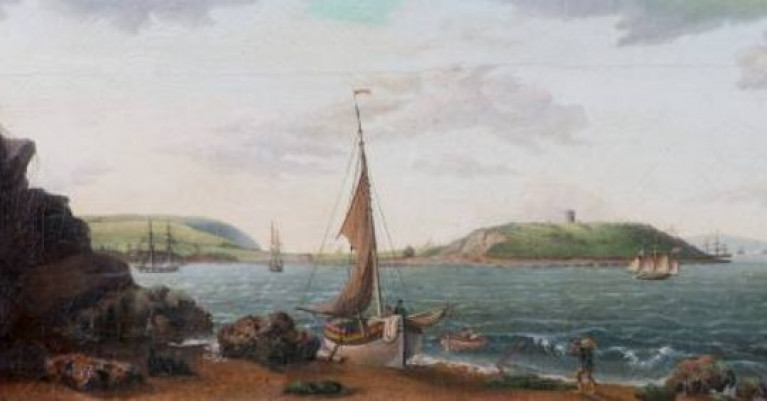Displaying items by tag: Crawford Gallery
Collection of Port of Cork Paintings Feature Tall-Ships at the Crawford Art Gallery
Underway is National Heritage Week with ongoing events to include The Port of Cork Company (PoCC) which is delighted to host an event celebrating its 250-year history, at The Crawford Art Gallery in Cork, which was built in 1724 as the original Cork’s Custom House.
In commemoration of this heritage, the Port of Cork Company gifted a significant collection of maritime paintings and artefacts, known as The Port of Cork Collection, worth an estimated €1 million to The Crawford Art Gallery in November 2021.
Guests were offered a guided tour of The Port of Cork Collection, to learn about the Port’s history and how it has played a vital role in keeping Cork connected as an international gateway for trade for many centuries.
Speaking at the event, Eoin McGettigan, Chief Executive Officer with PoCC, stated “As a company, we are very proud of our heritage, which spans over 250 years. These unique maritime artworks, by renowned artists, offer a fascinating insight into the operations of Cork Harbour at that time and underscore The Port of Cork’s long-standing international significance for commerce and trade."
He added "not only does the collection signify the history of our great port and harbour, but it also showcases how far the port has come, in terms of leisure, operations, scale and trade. We are delighted this collection has found such a welcoming home at The Crawford Art Gallery over the past 6 months.”
The Cork has more on the exhibition (running to 28 August) of 17 paintings on display that date to the 1800's to include a Cobh-born artist.
Donation by Port of Cork Marks Significant Maritime Art Collection to Crawford Gallery
The Port of Cork Company's donation of maritime artworks and historical pieces to the Crawford Art Gallery in Cork is a further boost to the city's art collection, writes the Irish Examiner.
As well as significant paintings of the port and its surrounds through the ages, the donation also includes a Ship’s Register from the Cork Harbour Commissioners, recording the visit of the Titanic, and mentioning the Lusitania.
The Port of Cork organisation, which is currently housed in the city's Custom House, is expected to move to Ringaskiddy as part of the major development of facilities closer to the mouth of the harbour. Plans have already been approved for the creation of a 34-storey hotel – potentially Ireland's tallest building – at the site of the Custom House, albeit with conditions around the preservation of aspects of the original building.
Among the 17 maritime paintings making their way across the city to the Crawford are 11 works by Cobh artist George Mounsey Wheatley Atkinson, whose iconic Paddle Steamer Entering the Port of Cork already forms part of the gallery's collection. A former ship's carpenter, the 19th Century resident of what was then Queenstown is renowned for providing insight into the ships of the era. The Crawford plans to exhibit the newly acquired pieces alongside other maritime pieces in its collection.
Also included in the Port of Cork donation are pieces by Mallow artist Henry Albert Hartland, famous for his watercolours and landscapes, skills he would have honed in the Crawford building during its early incarnation as Cork School of Art. Indeed, before it became associated with art, the Crawford building served as the city's Custom House before those functions transferred to the current Port of Cork premises.
Click here for further reading of the port's donation to the city's culture.
In Cork at the recently reopened Crawford Art Gallery is where a new exhibition features the maritime traditions of the port in the south of Ireland.
Statio Bene draws together over 40 artworks describing the traditions and historic views of Cork Harbour.
The exhibition features artworks describing Cork's global connectedness, its harbour and river, shipping and leisure, defence, and mobility of people.
It considers the concept of a 'safe harbour' as an anchorage in cultural, social, and other terms.
Presented in the Long Room in the Crawford Art Gallery, which was the city’s old Custom House, the exhibition is inspired by Cork’s motto – 'Statio Bene Fide Carinis' (a safe harbour for ships).
The exhibition also coincides with the 300th anniversary of the world’s oldest established yacht club – Royal Cork Yacht Club.
For more EchoLive.ie has on the exhibition.
Afloat adds the gallery is located on Emmet Place off Lavitt's Quay which is upriver of the city's main thoroughfare of St. Patrick's Street .

























































